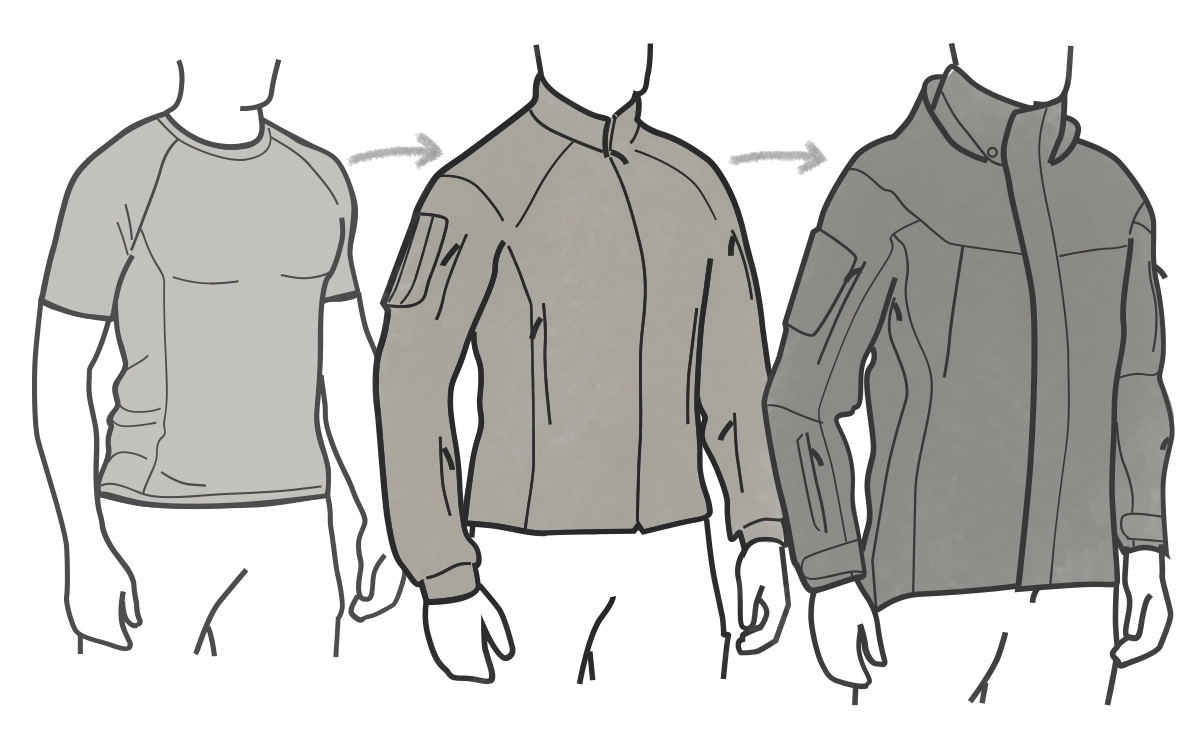Outdoor Sporting Gear – The Art of Layering: How to Stay Warm and Dry in Any Weather

Whether you’re hiking, camping, or participating in other outdoor activities, staying warm and dry is crucial for comfort and safety. The art of layering involves strategically selecting clothing items that work together to maintain an optimal body temperature and protect you from the elements. In this blog post, we’ll explore the basics of layering and offer tips on how to create an effective layering system for any weather conditions.
The Three-Layer System
A successful layering system typically consists of three main layers: the base layer, mid-layer, and outer layer. Each layer serves a specific purpose and works together to keep you warm, dry, and comfortable during your outdoor adventures.
- Base Layer: The base layer is the foundation of your layering system. It sits closest to your skin and is designed to wick moisture away from your body, keeping you dry and preventing chills. Materials like merino wool, synthetic fabrics, or silk are ideal for base layers, as they are breathable and quick-drying.
- Mid-Layer: The mid-layer provides insulation and helps to retain body heat. Fleece, down, and synthetic insulation materials are common choices for mid-layers. This layer should be breathable, allowing moisture from the base layer to evaporate and ensuring you stay warm and dry.
- Outer Layer: The outer layer, also known as the shell, protects you from wind, rain, and snow. It should be waterproof, windproof, and breathable to keep you dry and comfortable in various weather conditions. Hardshell jackets and pants, or softshell options in milder conditions, are popular choices for outer layers.
Tips for Mastering the Art of Layering
- Choose the Right Materials: Select materials that are moisture-wicking, breathable, and insulating for each layer. Avoid cotton, as it tends to retain moisture and can cause you to feel cold and damp.
- Fit Matters: Ensure each layer fits comfortably, without being too tight or too loose. Layers should be snug enough to maintain warmth but not restrict movement or blood circulation.
- Adjust as Needed: Be prepared to add or remove layers as the weather conditions and your activity level change. During high-intensity activities, you may need to remove a layer to avoid overheating, while adding layers may be necessary when resting or facing colder temperatures.
- Don’t Forget Your Extremities: Protect your hands, feet, and head with appropriate accessories, such as gloves, hats, and warm socks. These areas are particularly susceptible to heat loss and should be adequately covered.
- Invest in Quality Gear: High-quality clothing items may be more expensive, but they often perform better and last longer than cheaper alternatives. Investing in quality gear will ultimately save you money and provide a more comfortable experience.
Mastering the art of layering is essential for staying warm and dry in any weather conditions. By understanding the basics of the three-layer system and following the tips outlined in this blog post, you’ll be well-equipped to face the elements during your outdoor activities. Happy adventuring!
